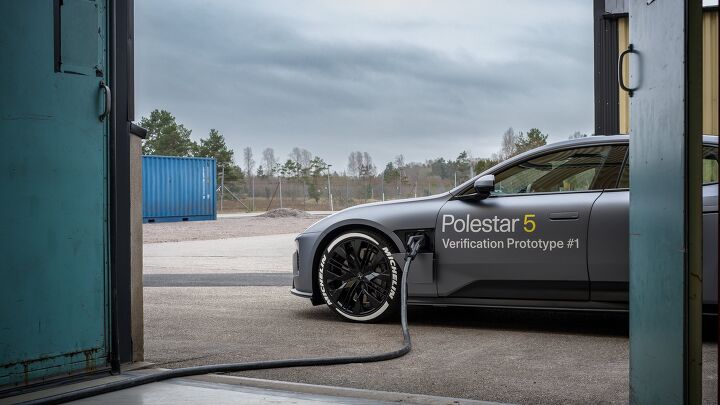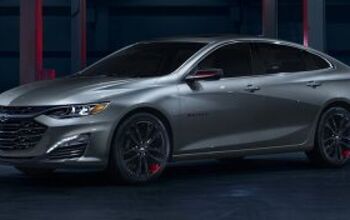Polestar Hits Impressive Charging Speeds with Prototype Car and Novel Battery Tech

Electric vehicle naysayers have a whole host of arguments against moving away from internal combustion. Range anxiety is often one of the first to hit the table, but that’s quickly becoming a non-issue as most new EVs offer a serviceable driving range. Charging time is another argument, but it’s one that actually has some teeth. Even the fastest-charging models still take upwards of half an hour to recover a meaningful amount of driving range, but Polestar recently demonstrated that worries about charging times may become a thing of the past.
The automaker partnered with battery technology company StoreDot on charging systems for a Polestar 5 prototype and achieved a 10-80 percent charge in just ten minutes. Using Extreme Fast Charging (XFC) silicone-dominant cells in a drivable vehicle instead of in a contained lab environment, the pair were the first to reach the milestone. In the real world, the early test could lead to 100-kWh battery packs that can recover 200 miles of range in 10 minutes.
Polestar said that today’s EV battery charging speeds vary wildly depending on a variety of factors, including the beginning state of charge (SOC). It noted that charging speeds typically fall off as the SOC increases. Starting at ten percent, the car’s batteries charged at 310 kW and increased to 370 kW at 80 percent SOC, the opposite of what we see today. Most impressively, the XFC technology works on existing DC fast charging infrastructure and the growing number of 350-kW chargers.
[Image: Polestar]
Become a TTAC insider. Get the latest news, features, TTAC takes, and everything else that gets to the truth about cars first by subscribing to our newsletter.

Chris grew up in, under, and around cars, but took the long way around to becoming an automotive writer. After a career in technology consulting and a trip through business school, Chris began writing about the automotive industry as a way to reconnect with his passion and get behind the wheel of a new car every week. He focuses on taking complex industry stories and making them digestible by any reader. Just don’t expect him to stay away from high-mileage Porsches.
More by Chris Teague

































Comments
Join the conversation
Cells capable of accepting fast charge have been available for years in power tools. You sacrifice energy density in cell designs of that type.
EVs will be ready for prime time when the chargers are dependable, and easy to use, when they can fill the battery in around 10-15 minutes, when there are sufficient numbers of them that people don't have to hang out for a half an hour waiting for a fast charger to be free, when chargers are widely available even in Nebraska, Wyoming, eastern Oregon, Nevada, Utah, the northern parts of Maine, New Hampshire, and Vermont, and within 10 miles of the start of the Tail of the Dragon, and when they get fixed pronto when they have problems.
You're right about that!
Golden2husky remember you from well over decade ago in these comments. If I wanted to have a screen name that reflected my canine companionship, I'd be BorderCollie as of about five years go. Life is definitely better with dogs.